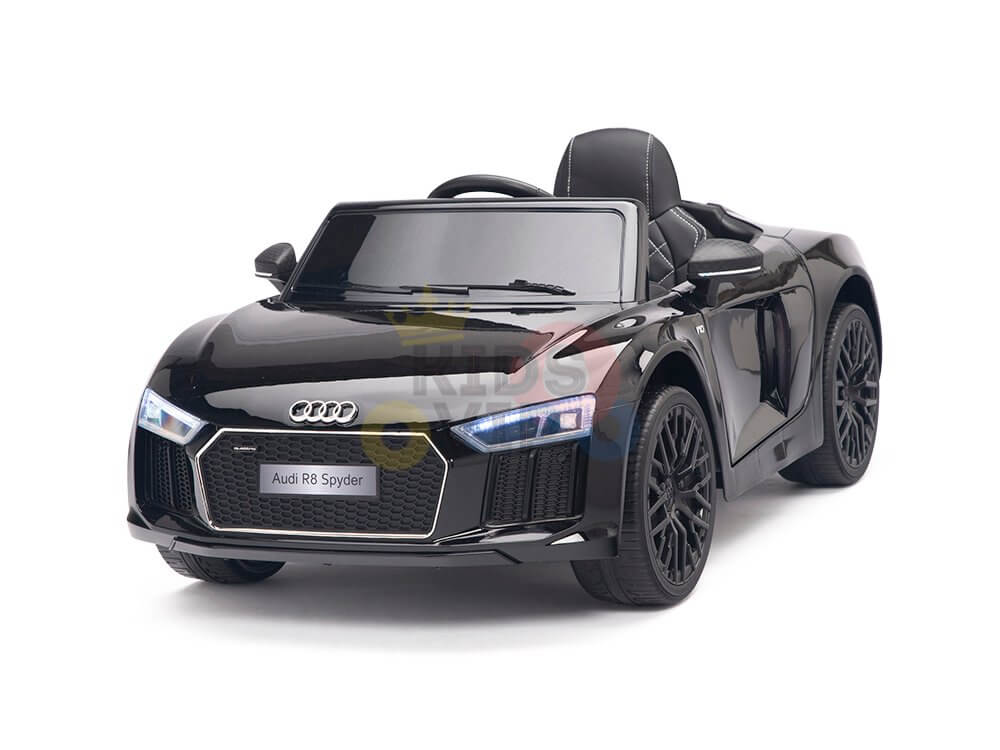Excellent Facts On Deciding On Electric Kids Cars
Wiki Article
What Should I Know About The Battery Life And Charging Time Of An Electric Kids Ride-On Car?
Knowing the battery life and the life span of a car that is electric is crucial to make sure your child enjoys an enjoyable and safe journey. This article will provide you with all the information you need to know about battery type.
Most electric ride-on vehicles can be recharged and utilize either led-acid or lithium-ion batteries. Lead-acid batteries take longer to charge and have a shorter battery life.
Capacity of Battery
The battery's capacity, measured in ampere-hours (Ah) or Watt-hours (Wh), determines how long the ride-on automobile can run on one charge. Batteries with higher capacity provide longer duration between recharges.
Run Time -
The run time of the electric ride-on car is referred to the length of time it will run continuously on one charge. It can be affected by a number of variables like battery capacity, motor speed, terrain, and the weight of the rider.
For electric ride on cars, the typical runtime is 30 minutes up to 2 hours from one battery charge. Some battery packs with higher capacity can have longer time-to-run.
Charge Time
The charging duration is how it takes to recharge a fully depleted battery. Charge times can vary based upon battery capacity or specifications for the charger.
The average charging time of electric ride-on vehicles is 8-12 hours. Certain models offer faster charging speeds, especially with lithium-ion batteries.
The longevity and safety of batteries depend on charging the battery in accordance with the manufacturer's guidelines. Battery performance can be adversely affected when the battery is either overcharged or undercharged.
Charge Method Charge Method
Chargers for electric ride-ons are usually plugged into standard household outlets. Certain models might have fast-charging capabilities or include an intelligent charger that monitors the battery's status of charge and adjusts the charging rate according to the condition of the battery.
Ensure that the charger port and connectors can be used with the charger provided with the ride-on vehicle in order to prevent damage to the battery or the electrical system.
Batteries for Additional Use
Certain electric rides on cars offer the option to buy additional batteries or spare batteries to extend play time. If you have additional batteries on-hand, you can quickly swap them out for fully-charged ones to reduce the time between repairs.
If you know the charging duration and battery life of an electric kids' car and your child can have endless hours of play and adventure. Continuously charging the battery, and following appropriate charging guidelines will maximize battery life and performance. See the best remote control childrens cars for site examples including electric ride along car, toy cars toy car, remote control childrens car, electric two seater cars, toy toy cars, childrens ride on, toy car, digger ride, cars pedal car, toy ride and more. .

What Is The Assembly And Maintenance Requirements For Kids' Ride-On Vehicles?
For the best performance, safety and durability kids' ride-on vehicles require some form of assembly. Here are some typical assembly and maintenance needs for ride-ons for kids:
The majority of ride-on cars are assembled and require some assembly on their arrival. Connecting the parts, such as wheels, steering wheels, and seats, according to the manufacturer’s instructions, is typical.
Install the components in accordance with the directions. Make use of the hardware and tools as instructed for completing the assembly process.
Cleaning -
To allow the vehicle to look the most attractive and function properly, regular cleaning is essential. Wipe down the exterior surfaces using a damp soft sponge or cloth dipped in mild soapy water. This will get rid of dust, dirt and other debris.
Pay particular attention to areas that are susceptible to accumulation like undercarriage, tires and wheels. Use a brush and toothbrush to clean the hard-to-reach places.
Avoid using harsh chemicals and abrasive detergents. They can harm electronic components or paint of the ride-on car.
Battery Care
It is essential to maintain the battery if your vehicle you drive by a battery which can be recharged. This will help maintain the performance of your battery and extend its the life of your battery. Follow these guidelines to take care of your battery -
Charge the battery prior to every use, and fully after each use. This ensures that you have maximum performance.
Avoid charging batteries excessively or leaving them connected to chargers for long durations. This could damage batteries and decrease their lifespan.
The ride-on car should be stored along with the battery in a cool, dry location when not in use and away from direct sunlight or extreme temperatures.
Regularly check the battery terminals for corrosion or damage, and clean them using a wire brush or terminal cleaner If needed.
Replace the battery in case it isn't holding a charge anymore or shows evidence of being damaged or degraded.
Tire Maintenance -
Regularly check tires for signs that they are losing air pressure, damaged or worn. As needed, utilize a bicycle air compressor or air compressor to fill the tires to the appropriate pressure.
Find debris and other foreign objects within the tread pattern that could cause punctures. Repair or replace damaged tires by clearing any obstructions.
Lubricate the wheels and axles bearings frequently to ensure smooth rotation and reduce friction.
Periodic replacements or repairs
Despite routine maintenance, ride-on vehicles may require occasional repairs or replacement parts because of wear and tear or damage caused by accident.
Keep an eye out for indicators of wear or damage for unusual sounds or power outages, or unusual behavior. Refer to the manufacturer's specifications or call customer support for assistance on troubleshooting and repair solutions.
Replace worn-out or damaged parts to protect yourself from further harm, and to ensure that the ride-on vehicles are safe and functional.
If you follow these maintenance and assembly guidelines by following these guidelines, you can keep your child's ride-on vehicle in great condition and enjoy hours of fun and safe time with your child. Check out the most popular JCB ride on digger for website tips including cars pedal car, ride on digger, toy toy cars, childrens electric cars, electric car ride, lambo toy car, two seater electric cars, toy the car, race car toy, kiddies cars and more. .

What Should I Think About Before Purchasing An Electric Child's Car? What Are The Advantages And Cons Of Electric Cars For Children?
When you're looking to purchase an electric child's car, you should consider a variety of factors. Be aware of these crucial aspects, which include information about prices, sizes pro, cons and much more.
Consider the age and size of your child before deciding on an electric kids' car. The age and size of your child will decide the model and type you pick.
Car Dimensions and Weight
Electric cars are available in a variety of sizes. They range from tiny, micro-sized cars to larger-scale models of real cars. The size and weight of your child's car should be based on their age, size and the strength. Consider the amount of space available for storage and play.
Price Variation
Electric cars for kids can be very expensive depending on a variety of factors. They include the dimensions, features brands and the build. The smaller models are typically less expensive, with costs ranging from $50 to $200. Larger-scale models range from $200 to $800 or more for top-quality replicas, which are licensed.
Pros and Cons -
Pros -
Children will have endless hours of fun and entertainment when they play with electronic kids' cars. They will experience the thrill of their very own vehicle.
Motor Skill Development. Driving an electric vehicle can aid children to improve their spatial awareness, coordination, and fine motor skill.
Electric cars are great for outdoor play. They promote exercise, exploration and physical activity.
Realistic Features: Many electric vehicles for children have real-life features, such as working lights, horns and MP3 playability. This improves the gaming experience.
Cons
Cost – High-quality electric children's vehicles, particularly replicas that are licensed from the most well-known car manufacturers, can be expensive.
Battery life – Electric cars make use of rechargeable batteries to power their motors, however, they may have limited runtimes and require regular recharges.
Safety Concerns Electric vehicles can be prone to dangers for safety including accidents, falls, and the possibility of entrapment. This is especially true when the vehicle is not utilized with care and supervision.
Maintenance and Assembly – Certain electric vehicles will require assembly prior to the time of arrival. They may also need regular maintenance, such as cleaning, battery treatment, and parts replacements or repairs.
Accessories and Features
Think about the features of the electric children's car. They include headlights that work, horns, parental remote controls, seat belts and storage compartments. Select a car with features that match your child's interests and preferences.
In the end, the ideal electric vehicle for your child will be based on factors like their size, age, interest, and your budget. Take the time to study and compare various models as well as read reviews and take into account the pros and cons before making a decision. Read the top rated kids cars kidscars.co.uk info for more tips including toy in car, toy car toy car, car toy toy, toy cars toy car, childs car toy, lambo toy car, childrens ride on, childrens digger, childs ride on car, kiddies cars and more. .
